
23 minute read
A Review on Shrimp Aquaculture in India
In 2003, a major shift in India’s investment in this field took place with the introduction of a new species of shrimp, namely L. vannamei (CAA 2008). The L. vannamei, a Pacific Ocean shrimp originating from the vicinity of the Hawaiian Islands was already well known for its advantages including a rapid rate of growth and resistance to disease (Boyd et al. 2018).
By: Mahesh Salunke, Amol Kalyankar, Chandraprakash D. Khedkar, Mahesh Shingare & Gulab D. Khedkar *
Shrimp aquaculture in India has an extensive history of successes and challenges reflecting both the potential and the problems of developing this industry.
The industry initially grew rapidly during the 1990s, largely through the efforts of individual farmers, but operated in an environment where there was often a lack of adequate regulatory guidance.
This review is intended to provide a detailed accounting of the history of shrimp aquaculture in India, including both successes and failures in these practices over time.
The lessons learned from this historical perspective should be of great value in guiding future efforts to develop and maintain this industry and to maximize its ability to serve as a food source for future generations.
In recognition of the growth of this sector, the Government of India established several fisheries related research institutes (Silas 2003).
Until the early 1970s, these programs were mainly focused on the production of finfish. At the same time, farmers in some south-east Asian countries began developing shrimp aquaculture.
In India, shrimp farming was first conducted only on an experimental scale. A major step toward large scale shrimp aquaculture took place soon after the first use of brackish water fish farming was demonstrated in West Bengal by the Central Inland Fisheries Research Institute under the Indian Council of Agricultural Research (ICAR) in 1973. Subsequently, an ICAR coordinated research project on brackish water aquaculture was sanctioned in all of India in 1975 through centers in West Bengal, Andhra Pradesh, Odisha, Tamil Nadu, Goa and Kerala (Sinha 1999).
Simultaneously, successful production of shrimp seed was demonstrated in Narakkal in Kerala by the Central Marine Fisheries Research Institute of ICAR (Silas 2003).
Thereafter, commercial shrimp hatcheries were established by the Marine Products Export Development Authority (MPEDA). Semi-intensive culture technology was also demonstrated on a pilot-scale project by the MPEDA (Muralidharan 2010).
These technologies, along with further experimental efforts by farmers, worked well and led to large scale development of this sector as shrimp aquaculture took root in India.
In India, a strong emphasis was also placed on improving shrimp farming techniques to minimize their environmental impact, as well as to extend sustainability through the use of technology.
In contrast, countries like China, Thailand, Indonesia, and Vietnam have emphasized practices intended to reduce production losses (Ponniah et al. 2011).
The species of shrimp commonly used during the early period of aquaculture development in India are listed in Table 1. Among these, P. monodon and F. indicus were initially the most popular. Currently, another species L. vannamei is widely used.
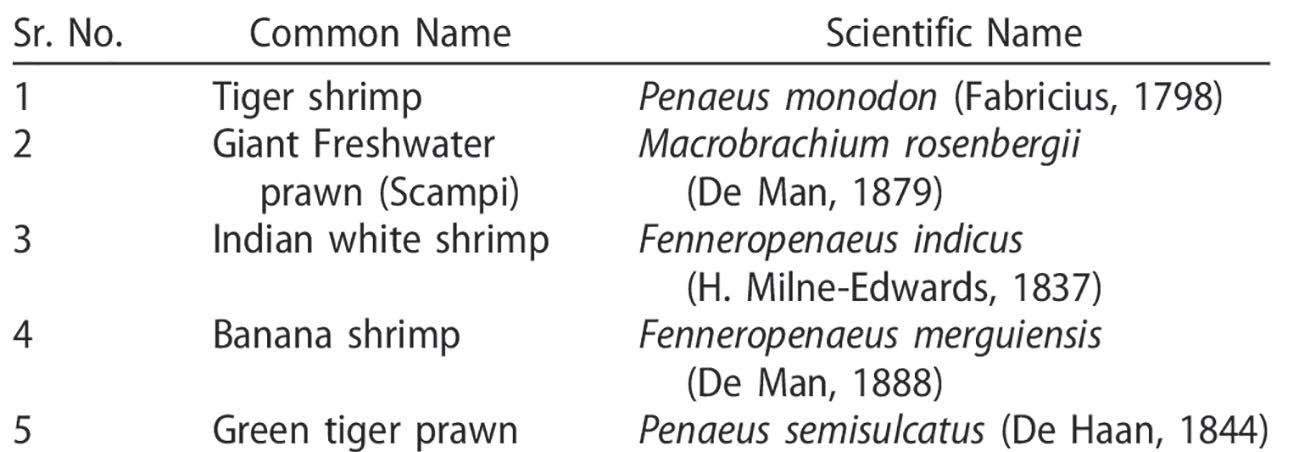
Table 1. Shrimp species commonly cultured in India.
The first peak of shrimp aquaculture production in India
Prior to the 1990s, a number of development schemes initiated by the Ministry of Agriculture and Ministry of Commerce, Govt. of India for shrimp farming were intended to pave the way for the establishment of multiple shrimp hatcheries and farms in the coastal states of India (CIBA 2009).
These efforts facilitated many successful enterprises during the early 1990s and in a sense this was a golden era of scientific aquaculture in India.
At the time, the development of this industry in India also benefitted from the fact that on an international level, several new technological developments were being adopted for intensive commercial production in Taiwan, China, Thailand and other countries (Kongkeo 1997).
Andhra Pradesh was at the forefront of this trend, followed by West Bengal, Kerala, Orissa, Karnataka, Maharashtra, Tamil Nadu, Gujarat, and Goa.
Through the adoption of these technologies, shrimp farming in India became a highly profitable enterprise and economically flourishing business (CIFRI 2007) in several coastal states.
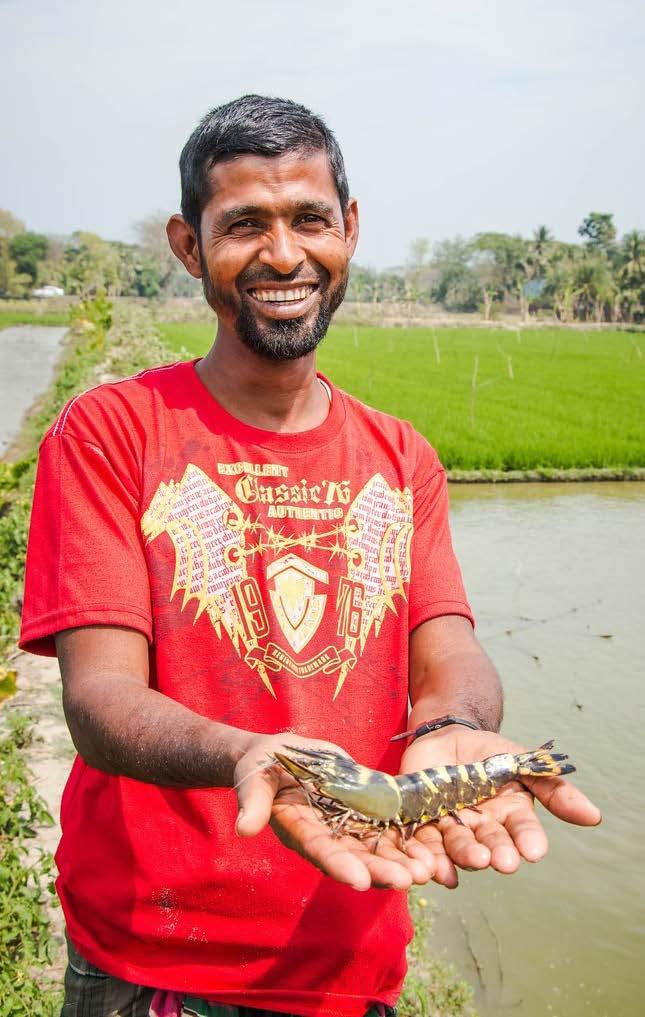
At its peak during the years 1993-2000, India became the fifth largest country in terms of global shrimp production (Briggs et al. 2004).
During this time frame a massive increase in shrimp farming areas occurred over a relatively short span of time. After this, however, as will be described later in this review, production declined considerably.
The Indian coastline became populated by large numbers of shrimp farms, and a huge infrastructure was created to support shrimp aquaculture. And although during this time several schemes were launched by government agencies to promote shrimp farming (CIBA 2009), neither the state nor the central government produced policies to develop uniform culture practices which might help sustain this industry over the long term (Jana and Jana 2016; Jelte de Jong 1989; Puthucherril 2016).
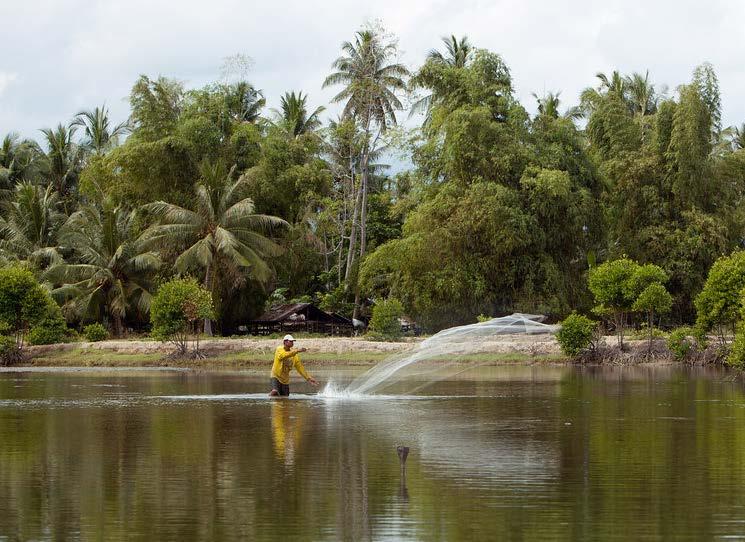
Size of shrimp farms
In 2005 the shrimp farms in most states of India could be broadly classified into four categories based on pond size. Small farms ranged from 0–2 Ha, medium farms were of 2-10 Ha and large farms were of 1,040 Ha. Finally, some very large farms were above 40 ha in size.
Medium-sized farms (2-10 Ha) accounted for about 13% of production and of the remainder, only 0.25% of farms were above 10 Ha and only 0.09% were above 40 Ha.
The levels of productivity of these farms ranged from 1 to 5 MT/Ha (Handbook on Fishery Statistics 2014). But, more than pond size, pond management practices were one of the essential criteria correlated with the levels of production per hectare (Pucher et al. 2015; Pucher et al. 2016).
Proper maintenance of the pond environment becomes more challenging, especially in bigger ponds during molting. Feed distribution and aeration are also more conveniently carried out in smaller ponds compared to larger ones (Islam et al. 2005; Kongkeo 1997).
This could be one reason why farmers tended to restrict their farms to smaller scales in spite of the demand for high levels of production (CAA 2005). In such small ponds, in most cases, farmers kept their stocking densities on the higher side of 20-300 PL/m3 (FAO 1986).
Conversely, these higher densities often also led to poor hygienic conditions. Over long durations and multiple crop cycles, this may have resulted in the establishment of high microbial loads (Karim et al. 2017; Krishnan and Birthal 2000).
Also during this peak period, the average shrimp production level in India was 0.73 tons per hectare per crop. Though, in the same time period, production levels in other countries were considerably higher (see Table 2). This could be one reason that Indian shrimp farmers were inspired to utilize new ideas involving seed, feed, and chemicals for maintaining water quality and drugs for disease control (Anon 2002).
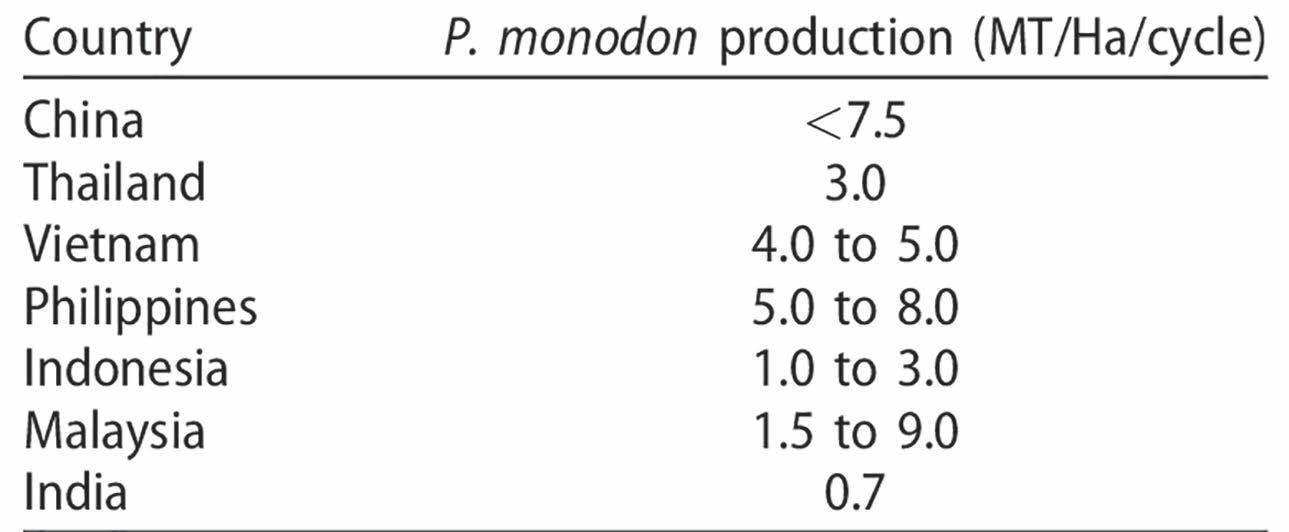
Table 2. Shrimp production levels among the major shrimp producing countries (FAO, 2005).
Loss of productivity
In nature, the notion that anything in excess turns into poison became relevant for shrimp culturing in India (CMFRI 2005; Krishnan and Birthal 2000).
Largely to increase profits, several farms became crowded together in coastal vicinities (Escobedo-Bonilla et al. 2005) and as a result, enormous inputs of protein-rich feed, prophylactics, and manures increased the pollutant load several-fold in areas close to the seashore (Yang et al. 1999).
The majority of the farms were also poor in their hygiene practices and had almost no drainage possible (Coastal Aquaculture Authority, 2006; Samocha and Lawrence 2018; Bhushan et al. 2016) adding greatly to the pollution.
Also, until the 1990s, the shrimp industry had only minor levels of disease prevalence associated with P. monodon cultures. But, in 1994, suddenly the occurrence of WSSV (White Spot Syndrome Virus) on black tiger shrimp, Penaeus monodon became widespread over an extensive area from Visakhapatnam to Sirkali of Tamilnadu (Anon 2002; Karunasagar et al. 1997).
The spread of WSSV quickly resulted in the collapse of the Indian shrimp industry due to mass mortality in the culture ponds (Balakrishnan et al. 2011).
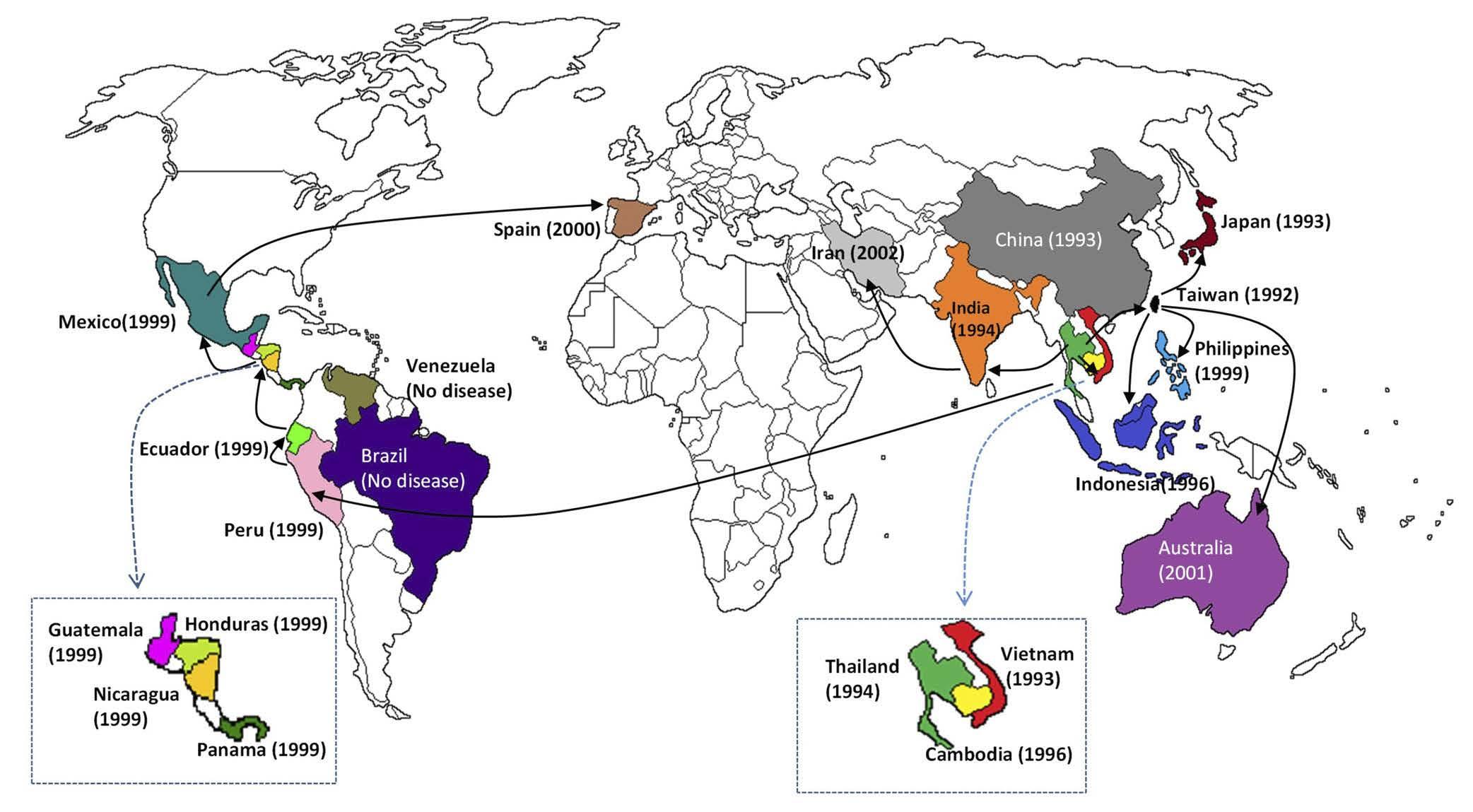
Figure 1. Map showing probable WSSV disease origin and its route of spread (the areas shown in dotted square is zoom of a section of the global map).
Following the WSSV infection, in 1998 loose shell syndrome (LSS) (Alavandi et al. 2008; Raja et al. 2015), caused by V. parahemolyticus, V. proteolyticus, V. alginolyticus, and V. coralliilyticus bacterial infections were also reported in India.
Overall, these disease problems resulted not only in massive losses to farmers but also to several stakeholders in related industries such as the hatcheries, feed companies, aquaculture chemical companies among others.
It has been documented that over 80% of the farms were owned by small-scale farmers in these coastal regions and that the continuous crop failures, high lease values, and erosion of profits forced some operators to completely abandon their shrimp farms (Mohan and Bhatta 2002). Figure 2 gives an overview of the consequences associated with the emergence of disease.
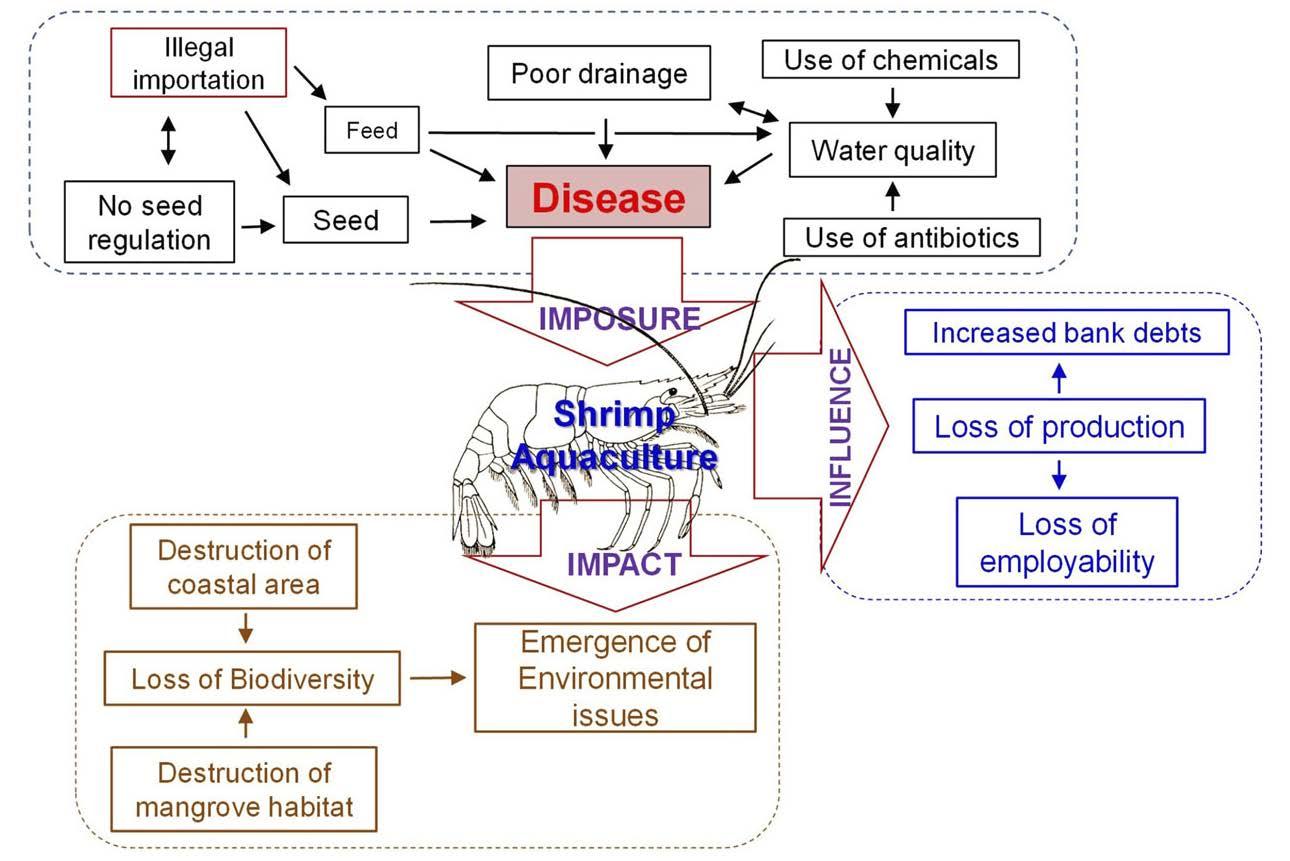
Figure 2. Overview of consequences associated with the emergence to disease in shrimp aquaculture (P. monodon).
Post disease experimental work and its consequences related to the environment
The disease outbreaks caused by the WSSV infections severely impacted almost every shrimp farm in India (Vijayan and Sanil 2012), and the damage led to both farmers and hatchery operators to attempt to find ways to deal with these problems.
First, they took new feral broods from areas like Andaman and Nicobar Islands and the Gujarat coast that did not appear to be infected. Farmers also started using seed pretreatments like drug applications and so-called “deep” or bath treatments in which shrimp are held in containers with a strong solution of a chemotherapeutic for short durations (Pathak et al. 2000).
Another application method was used where low concentrations of the chemicals were applied to the culture tanks or ponds for an indefinite period (Pathak et al. 2000). Extensive feeding with high protein-rich feeds, incorporation of water quality enhancers, micronutrients, applications of antibiotics prebiotics and probiotics were also practiced extensively.
Subsequently, many of these techniques also imposed problematic issues related to surface and groundwater pollution in the shrimp culturing areas.
The exaggerated use of different chemicals also created potential hazards including contamination of drinking water sources, creeks and near shore sea waters, accumulations of heavy metals in creek sediments, and increases in bacterial and fungal count due to organic contaminant loads.
Discharges into canals and the sea also appeared to lead to overgrowth of blue-green algae in the receiving waters (indicating organic pollution) and changes in soil characteristics in agricultural lands surrounding the aquaculture farms (Pathak et al. 2000; Srinivas and Venkatrayalu 2016; Rico et al. 2012).
Overall, this was a clear indication of the potentially catastrophic consequences of the shrimp farming practices on the entire coastal ecosystem including groundwater resources.
Involvement of the parliament of India of India after a supreme court decision to ban shrimp farming in the close vicinity of the coastline
Given the economic importance of this industry to the entire country, the need for research on the economic and environmental impacts of coastal shrimp farming in India ultimately became a national issue.
Partly in response to the negative assessments that were available, in 1996 the Supreme Court of India passed a decision banning shrimp farming and related industries located in the vicinity of the coastline (< 500 meters) (Supreme Court Writ Petition (Civil) No. 561 of 1994).
Overview of consequences associated with the emergence to disease in shrimp aquaculture (P. monodon).
This bill also called for the establishment of an Aquaculture Authority Act, 2005 enacted by the Parliament in June 2005 was designed to regulate the activities connected with aquaculture in the coastal area.
The MPEDA described earlier was also entrusted to carry out the registration of shrimp hatcheries and for providing assurances that the shrimp hatcheries were set up and functioning as per the guidelines (CAA 2005; MPEDA 2008).
Scientific efforts for control of WSSV
On a global level, several laboratories took actions to address issues related to WSSV. The main need identified was for early diagnosis of WSSV either in pond water or the seed.
Several private biotech laboratories and academic institutes were involved in developing early diagnostic kits using PCR, some of which were successful and marketed in India (Kiatpathomchai et al. 2001; Minardi et al. 2019; OIE 2014; Reddy et al. 2010; Tsai et al. 2012). These kits were intended to be easy to use and provide results that would be easy to interpret by the farmers and hatchery operators.
Several private and public laboratory facilities were also built for addressing disease issues. In these laboratories, however, the mode of testing was often expensive and time consuming, required sophisticated laboratory equipment and trained laboratory personnel, and as such did not represent appropriate solutions to resolve these issues (Cock et al. 2009; Cock et al. 2017).
Finally, this also often required long-distance transportation of samples from the field to the laboratory. This was a critical logistic factor as most of the shrimp farms were located in remote areas of India (Flegel et al. 2008).
Simultaneously, farmers tried extreme measures to deal with WSSV infections including indiscriminate use of antibiotics, but this approach was successful only in very few cases (Manage 2018).
Also given a large number of variables such as optimal stocking densities, appropriate feed formulations, and disease treatments, farmers often ended up following trial and error strategies largely based on data generated from sources not relevant to Indian climatic conditions (Patil and Krishnan 1998).
Other precautionary measures practiced by farmers on their own included the use of probiotics and immunostimulants. These products had been shown to be effective in laboratory trials. Yet, in field trials, little or no effects were realized (Otta and Patil 2012). Quorum sensing and the use of vaccines were tried as well but were also shown to not be of much use (Flegel et al. 2008; Otta and Patil 2012).
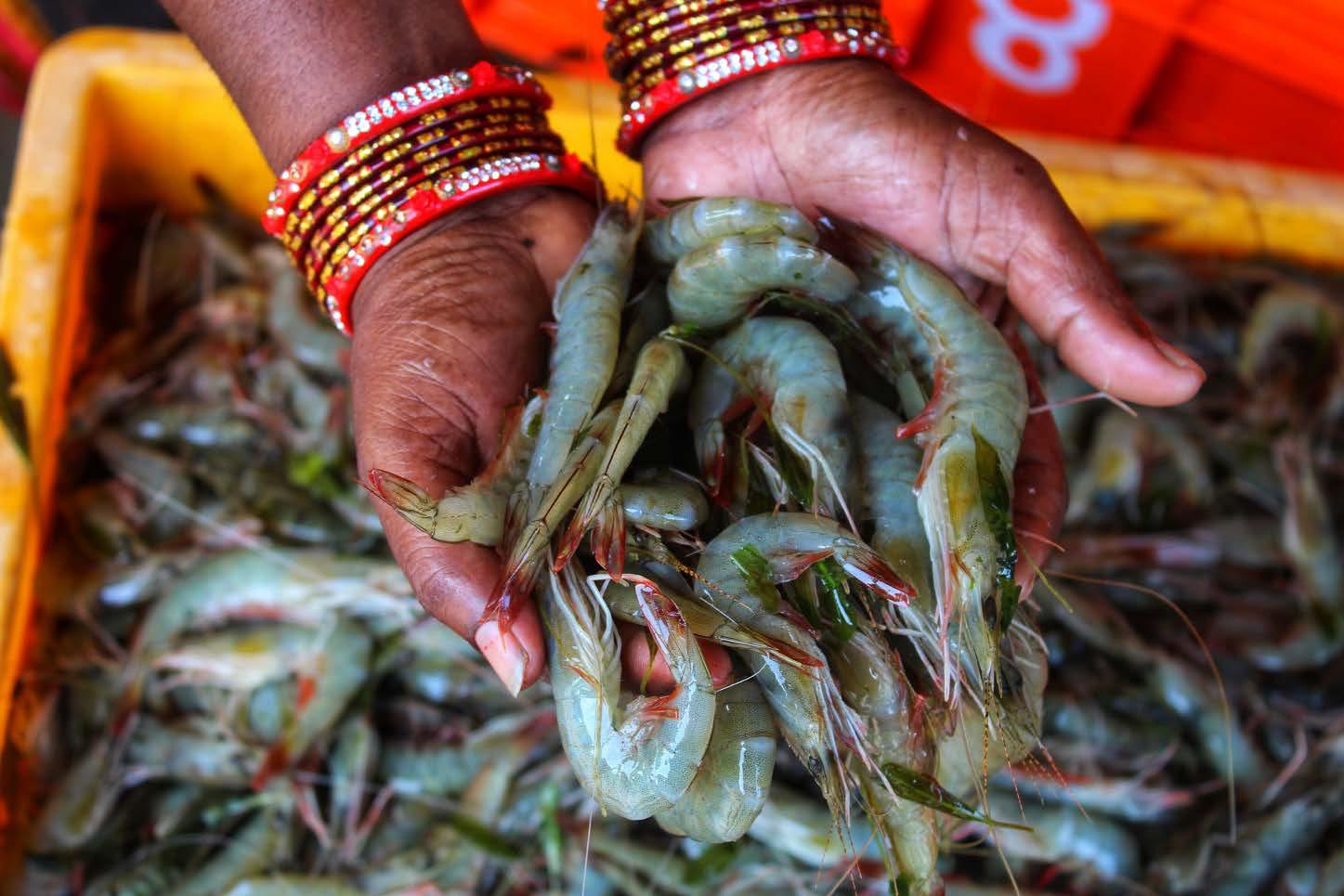
A new era: Introduction of Litopenaeus vannamei
Given the deleterious WSSV of P. monodon that resulted in several farms accumulating huge bank debts as well as other liabilities (BFDA 1997); farmers started looking for alternative species to culture in their ponds.
This being an alien species to Indian waters, however, in 2009 a pilot-scale introduction of L. vannamei began. Large scale culturing was later approved (The Department of Animal Husbandry, Dairying & Fisheries (DAHD & F), Government of India, Notification dated 15.10.2008), but the early introduction of L. vannamei first took place on a restricted basis and only under a process developed by the government of India.
Originally, just two companies, BMR hatcheries and Sarat Seafood (located in Andhra Pradesh), were permitted to import broodstock from approved countries and conduct trials in a confined environment.
It also recommended procedures to establish testing facilities for monitoring of strains claimed to be pathogen-free and/or pathogen resistant.
When the government of India decided on a large-scale introduction of L. vannamei, the agency designated to authorize importation of vannamei broodstock was the Coastal Aquaculture Authority (CAA), of the Government of India, Chennai (CAA 2008).
Current production levels of L. vannamei
The decision to permit the farming of L. vannamei changed the nature of the shrimp aquaculture industry in India.
Currently, the total seed production of L. vannamei officially registered in India is 24,209 million larvae.
This estimate is derived from the number of hatcheries, assuming they are operating at their full capacity (CAA 2015).
Though, the available area of the farms registered with CAA under L. vannamei culture is about 59,116 hectares, and estimated seed accounts approximately for 35,469.6 million larvae. Similarly, L. vannamei production statistics, as well the area under culture, is also disproportionate.
This suggests that farmers may be illegally importing broodstock and/or producing seed or that unregulated and/ or illegal farming is being practiced on a large scale (Business Standard News 2013).
Various reports and publications had warned about this in L. vannamei farming and its future (Coastal Aquaculture Authority, 2006; Hein 2000; Joseph et al. 1997; Kagoo and Rajalakshmi 2002; Kumar et al. 2011; Samocha and Lawrence 2018).
Farmers, however, may not be revealing the true extent of their L. vannamei cultures to circumvent several regularity procedures. Such illegal farming poses a severe threat of disease and may result in heavy losses (Sedhuraman et al. 2014; Senapin et al. 2007).
Real and potential impacts of uncontrolled and unregulated culturing
The growth of the shrimp aquaculture industry during the last two decades has had various environmental impacts (Hein 2000).
One of these, poor water quality, is the main stress factor for all aquatic animals including shrimp (Selvam et al. 2012; Joseph et al. 1997; CIBA 2002).
This stress also raises the sensitivity of creatures to disease while weakening their feed conversion efficiency and growth rate.
This in turn may lead to reductions in production and disease outbreaks (Hossain et al. 2013; Paez-Osuna 2001). The destruction of wetlands and conversion to agricultural land, and the impacts this may have on watercourses in the vicinity and soil salinization also need to be considered (Dorababu 1993; Kagoo and Rajalakshmi 2002). Effluent treatment system (ETS) (Kumar et al. 2011)
Such cooperative culture projects can result in a reduction of the organic and nutrient loads, enhancing the wastewater quality, and cultivating additional cash crops. But, it seems that many farmers have fragmented their farms to be classified as small farm areas and to avoid the requirement to invest in ETS.
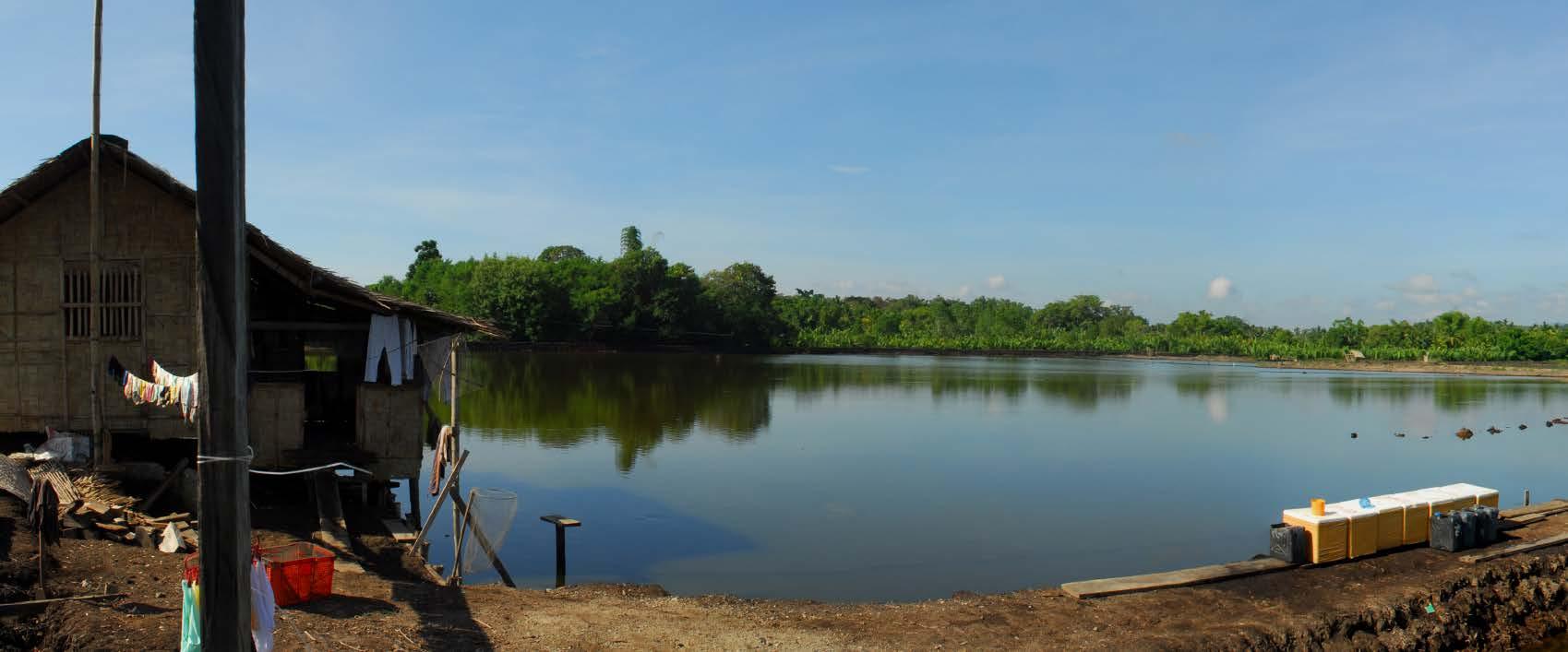
Diseases
There are a number of new diseases of L. vannamei that farmers and regulatory agencies must be aware of to prevent future problems (Lightner 1985). Recent years have seen increasing numbers of outbreaks of different diseases.
The occurrence of shrimp diseases in L. vannamei cultures reported in different regions again prompted farmers to use control efforts including the use of antibiotics, chemical drugs, bactericidal agents as well as water quality enhancers (Mishra et al. 2017; Swapna et al. 2012).
Records of non-compliant samples reported by the National Residue Control Plan for Aquaculture Products have shown that the application of antibiotics such as nitrofuran and chloramphenicol is still occurring in shrimp culture across India, in 2015 (Export Council Inspection India National Residue 2015).
Similarly, European countries identified about 24 cases of Indian shrimp export products containing nitrofurazone, furazolidone, and chloramphenicol and excessive amounts of oxytetracycline, during 2012–15 (Rao and Prasad 2015).
The Hepatopancreatic haplosporidiosis (HPH) is also an emerging disease of concern. This is caused by an unknown haplosporidian (not listed for SPF) and is different in its histopathology from EHP, a known pathogen in Indian aquaculture. Alarming examples of transmission of this and other exotic pathogens via living or frozen shrimp imported for aquaculture have already been reported (Durand et al. 2016; Hasson et al. 2006; McColl et al. 2004; Nunan et al. 1998; Subasinghe and Bondad-Reantaso 2008).
Potential impacts on biodiversity
The introduced L. vannamei is a nonselective, voracious forager that consumes its food faster than the native shrimp species. When either accidently or intentionally released into waterways, it may create competition for native species (Chavanich et al. 2016). It may also have fewer natural enemies and less competition in new habitats when released through accidental escapes.
Also, imported broodstock is essential for the hatcheries in India to produce high quality, disease-free shrimp seed for supplying farms. Because of this, the expansion of Aquatic Quarantine Facilities will also play a major role in mitigating risks associated with the introduction of nonnative species by the imposition of stringent quarantine measures.
It is hypothesized that the manipulation of the biodiversity of the gut microbiota in the shrimp can also increase the host resistance against pathogenic invasion and infection. Conversely, substantial barriers need to be overcome before active management of the intestinal microbiota can effectively be applied in larviculture (Schryver and Vadstein 2014).
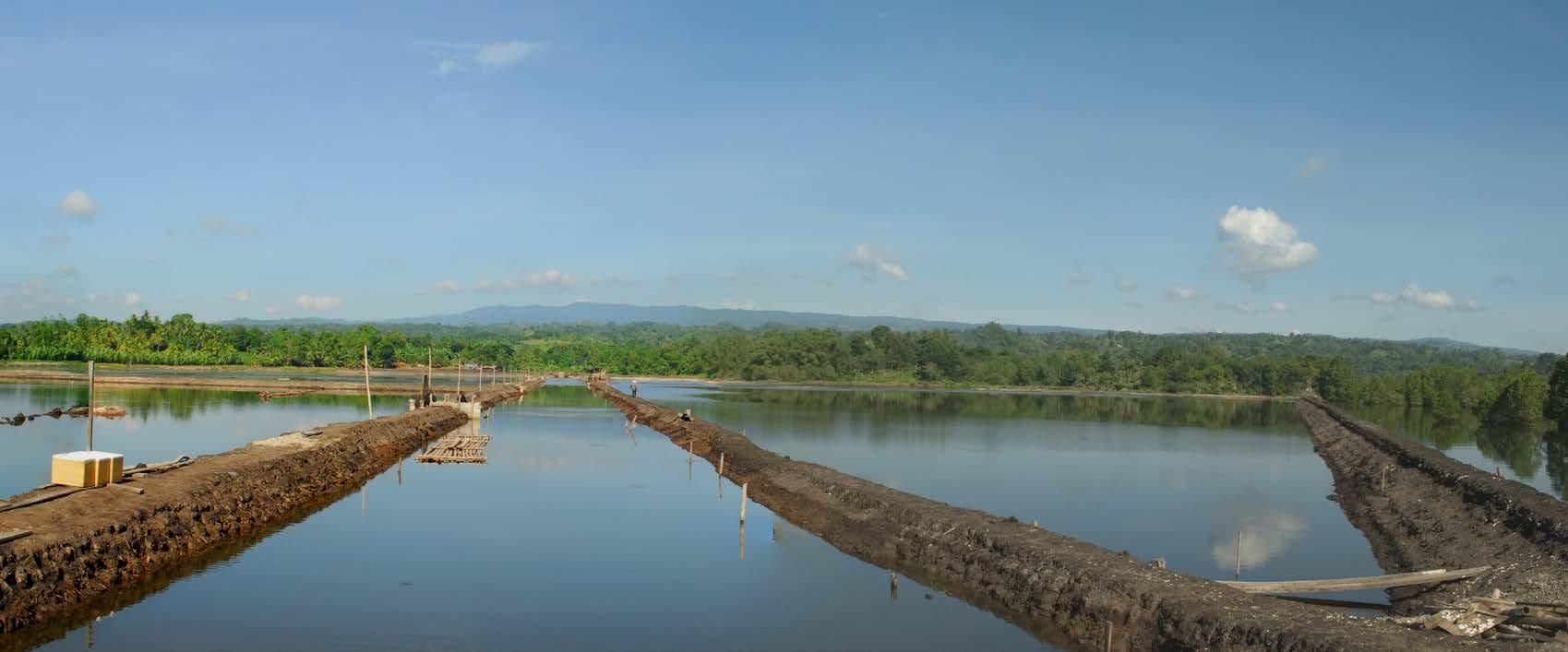
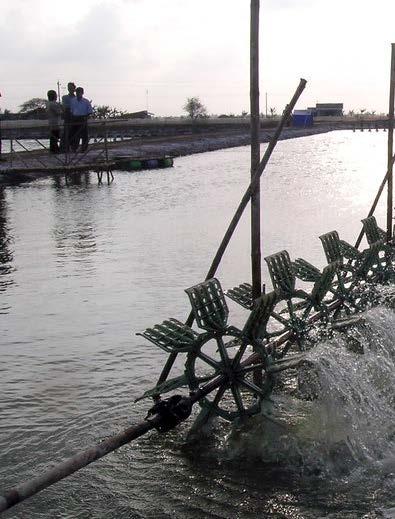
Approach to implementing sustainability
Of late, through various media resources issues have been raised toward environmental and social concerns related to shrimp farming, and the shrimp disease outbreaks probing a question mark on the sustainability of this culture system.
A general opinion is built leading to the assumptions that shrimp farming is a highly unsustainable culture system and has enormous negative impacts.
Whereas, practices can be recognized in some circumstances where there are signs of threats to sustainability (e.g. social conflicts, shrimp disease outbreaks, environmental impacts, etc.). Similarly, to implement sustainability, it is likely possible to ascertain farms and farming systems among the diversity of shrimp farming practices which have grown shrimp over many years, without obvious adverse social conflicts or environmental impacts.
Among the several challenges which are prevailing in the shrimp culture sector, is the need to appropriately identify and encourage those systems and management practices – among the diversity of practices - which are sustainable and promote these as a contribution to the sustainable development of shrimp farmers as well as peoples residing in the coastal areas.
There is sufficient scope for improving or tuning prevailing institutional and legal frameworks governing current aquaculture practice in India, and for enhancing capabilities of the public and private sectors to better plan and manage the development of the shrimp aquaculture, be it at national, regional, local or farm levels.
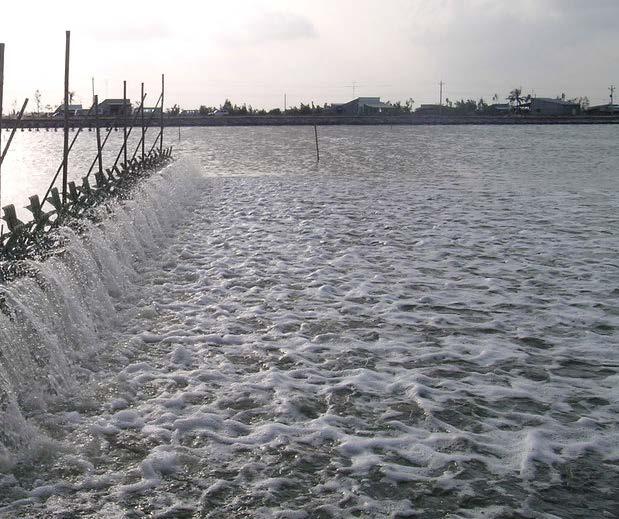
Moreover, whilst the bulk of farmed shrimp produced in India, most of this production is being exported and consumed in industrialized countries. There are therefore many possibilities to strengthen international co-operation on technical, policy, and trade issues associated with shrimp culture developments.
Regulatory authorities may have a more precise legal framework, which applies specifically to coastal shrimp aquaculture. Given the complexity of the legal and institutional issues involved, regulatory authorities may opt for a solo comprehensive new or amended coastal aquaculture law including provisions extracted from existing laws.
In the process of drafting a legal framework for coastal aquaculture, including shrimp culture, regulatory authorities should ensure that livelihoods of local communities and their access to coastal resources are not adversely affected by coastal aquaculture developments.
Legislation must be framed into the context of related laws and regulations including those addressing coastal area management and should be the result of an interdisciplinary and consultative process with stakeholders.
There should be equivalence between laws and regulations governing coastal aquaculture including permitting, restrictions and monitoring, with those governing other users of coastal areas, wetlands, mangroves, and water.
Conclusion
Significant changes have occurred in the shrimp aquaculture industry in India from the 1990s to the present.
This includes increases in the total acreage and productivity of shrimp farms, major disease outbreaks, changes in the species primarily used, and efforts to develop an appropriate regulatory framework to assure the survival of the industry and to meet export standards.
The regulatory framework is also intended to provide adequate quarantine mechanisms for the importation of new aquatic organisms and for testing of disease control strategies. It may also address several issues related to the social, economic, and environmental impacts of coastal aquaculture.
*This article is a summarized version of the original review: “A Review on Shrimp Aquaculture in India: Historical Perspective, Constraints, Status and Future Implications for Impacts on Aquatic Ecosystem and Biodiversity”, written by Mahesh Salunke, Amol Kalyankar, Chandraprakash D. Khedkar, Mahesh Shingare & Gulab D. Khedkar *. The original version was published through the Taylor & Francis Reviews in Fisheries Science & Aquaculture Journal during 2020 (vol. 28, number 3). The full version can be accessed online at: https://doi.org/10.1080/23308249.2020.1723058 Editor’s note: references cited by the authors within the text are available under previous request to our editorial team.

